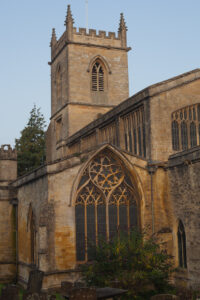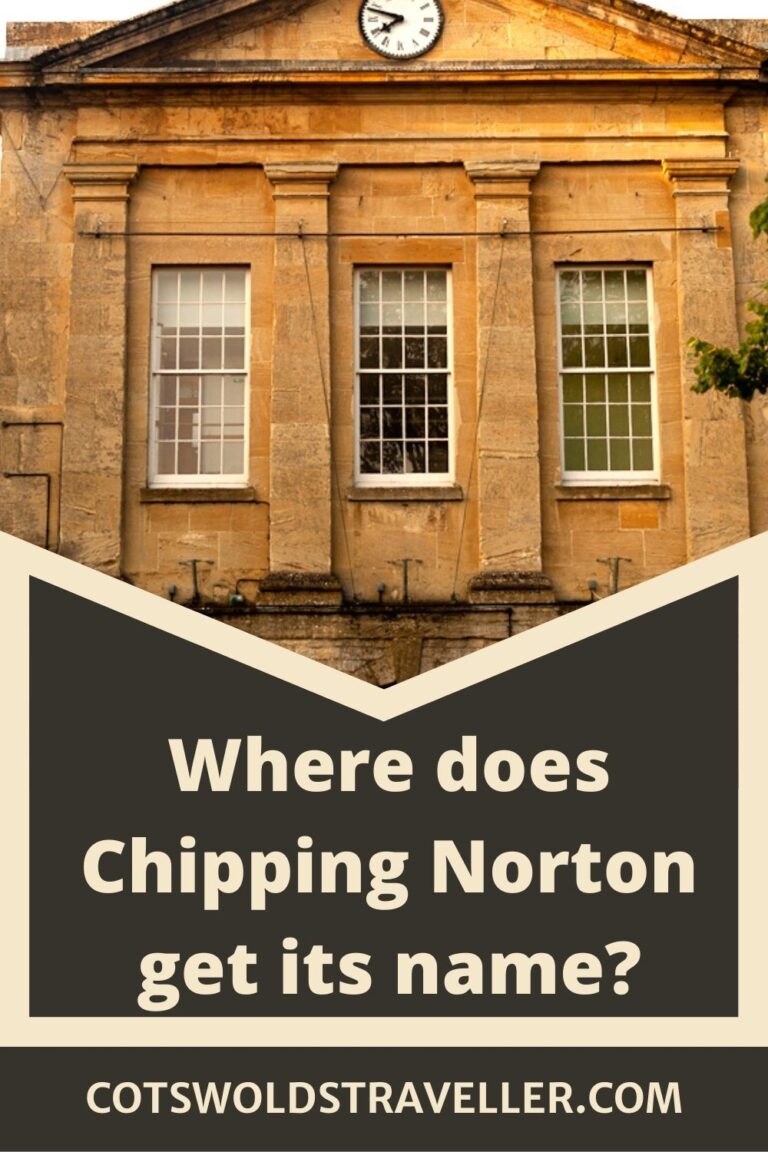The town of Chipping Norton is listed in the Domesday Book of 1086 as ‘Nortone’ – literally meaning “North Town”. Human occupation of the area dates back even further, and evidence of this can be seen in the nearby ‘Rollright Stones‘, a complex of stone structures dating to the Neolithic and Bronze Ages. The settlement of Nortone thrived following the Norman conquest of England, and modern Chipping Norton’s history can still be found in its streets and buildings for the visitor with the time to find it.
History of Chipping Norton

Though a settlement existed around the 11th century, it was only when the manor was granted to a French knight, Ernulf de Hesdin, that the first motte and bailey castle was created. Ernulf was an extensive landowner throughout the Cotswolds and other parts of Norman England. The original castle was a wooden structure, built to the northwest of the modern town. No evidence of that original structure still exists apart from some earthworks upon which it was built.
During the 12th century, Ernaulf’s descendants rebuilt the castle, likely to protect the developing wealth of the town. Even when Ernaulft had first been granted the manor, the North Cotswolds area was s thriving wool producer, but by the 12th century, this trade was burgeoning with fine wool products and fleeces being exported to Europe in exchange for grand wealth. This trade was further enhanced when the town was granted a Royal Charter and the prefix “Chipping” was included in the name.
‘Chipping comes from the Old English ‘market’ and can be seen in the names of other Cotswold towns, such as Chipping Campden and Chipping Sodbury.
As in other wealthy towns and villages, some local merchants reinvested that wealth into the local parish church, and the church of St Mary the Virgin is an impressive example of a Cotswolds ‘wool’ church. It was built just beyond the site of the castle to the north of the modern town.
What does “Chipping Norton” mean?
‘Chipping’ comes from the Old English ‘word for market’ and was attributed to the name of the town in 1244 when King Henry III gave it a Royal Charter to hold a market. ‘Nortone’, or later just Norton, is the original name of the town as listed in the Domesday book of 1086, and means “North Town”.
Modern history
Chipping Norton managed to escape the ravages of the decline of the wool trade by adapting its output, and by being on a railway line connecting it to other large towns. In the late 18th century a brewery was established which flourished. Wool and textile continued to play an important part in the economy of the town, but now in the form of manufacturing, with a tweed mill and a glove-making factory being established. Other local industries included a tannery and an iron foundry.
The arrival of the railways in the mid 19th century brought a fresh wave of wealth and prosperity, and again, wealthy locals reinvested this into the town. Evidence of this can still be seen in the magnificent Georgian and Victorian frontages that many of the buildings and houses of the town still have.
One of the most visible remnants of this wealth is the now converted Bliss Mill which stands to the west of the town centre. This Victorian tweed mill was operating until 1980 when it closed and was converted to residential apartments.
Today Chipping Norton is one of the Cotswolds most attractive places to live and draws in some of the world’s most wealthy and popular individuals. Despite this, the surrounding area still supports a thriving agricultural economy. More recently, the agricultural economy has become a star attraction for Chipping Norton and the local area, with a popular television series, “Clarkson’s Farm” being filmed on the nearby ‘Diddly Squat Farm’, owned by celebrity farmer, Jeremy Clarkson. The popularity of the program has brought a renewed stream of visitors to both the town and the local area in search of “cow juice” from Diddly Squat Farm Shop.

